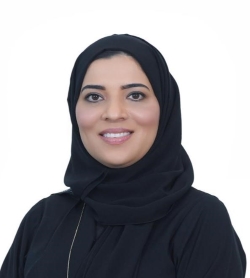
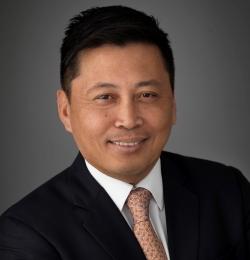
An understanding of genome organization of an individual is key towards both understanding the nature or type of cancer that a patient may be predisposed to as well as the course of treatment of the malignancy itself. Not only does genomic information provide more accurate diagnosis, it provides actionable opportunities to prevent the disease. In cases where treatment of cancers is required, genome information will provide an opportunity to define the appropriate medication at the optimal dose (i.e. discipline known as pharmacogenomics). In some cancers solid organ transplantation may be required. Leukaemia is treated by replenishment of compatible haematopoietic stem cells (HSC) following total immune ablation by chemo- and/or radiotherapy. In these cases, the genetics of the donor and the recipient at a region of human chromosome 6 known as the Major Histocompatibility Complex (MHC) has to be identical. Irrespective of whether for diagnosis, prevention or treatment, data collaged from the genome of an individual is increasingly playing an important role. There is a dearth of genome information from subjects of Arabian ancestry, and this study was conceived to improve on this unacceptable position, particularly among the local ethnic groups of the United Arab Emirates (UAE).
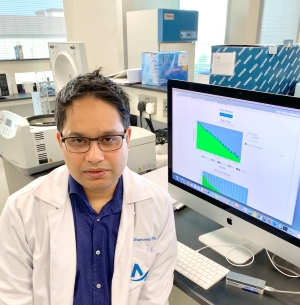
Autism spectrum disorder (ASD) is a phenotypically highly variable condition that affects 1 in every 59 children (CDC 2018). Genetics play a major role into the susceptibility of autism spectrum disorders risk factors. The genotypic and phenotypic heterogeneity is one of the major challenge to identify the etiological biological signals. The recent advent of genomic technology started to unravel the genes and mutations responsible for autism. The current diagnostic yield is around 40% leaving much of the genetic factors unexplained. It is also important to know cellular heterogeneity also plays a key role into the etiology of autism. To address these complexities, we are aiming to implement a robust machine intelligence (MI) algorithm to decipher polygenic risk factor of ASD by computing gene-gene interactions from genomic (whole genome and exome) data integrating with transcriptome and other OMICs. In this study, we will be able to produce an algorithm that will be able to optimize multidimensional genomic and OMICs data to increase sensitivity and specificity of diagnosis and therapeutics of autism spectrum disorders.


In this project we develop a ‘Direct Solar Desalination Device’ aiming at bringing unmatched scientific understandings and “know-how” toward the achievement of a reliable desalination technology that offers high efficiency, large scalable capacity, and the lowest energy consumption in addition to being powered be an abundant renewable source of energy, the sun. The research team consists of two professors who demonstrated in-depth understanding of membrane desalination and solar energy integration. They will work together with a team of MSc students, research associates and postdoctoral fellows to develop direct solar desalination devices. The work proceeds with fabrication, system testing and demonstration, concluding with scalability and market feasibility. Till date the solar desalination technologies that have been proposed in the market or within the global desalination research community taps on the integration of solar energy harvesting devices with desalination devices. In this project we develop solar absorbing membranes which can act as a near black-body object and demonstrate an absorbance of 97%, while at the same time desalinating seawater through a pervaporation process. Such a device not only outperforms the existing ideas in its integration of solar energy absorbance and desalination in a single layer, rather additionally raises the thermodynamic energy efficiency limits via the process of coupling solar absorbance with enhanced evaporation via the natural capillary pumping process in nano-pores. The project activities over 3 years are divided into 3 interlinked work packages which are led and matched by the PI and the Co-PI’s demonstrated expertise. Fabrication will use the state-of-the-art electrospinning technology, composite layering integration, and phase inversion/ casting to achieve the most reliable and reproducible membranes relying on high caliber analytical assessments that the PI’s laboratory can offer. We intend to leave a greater impact on the water-energy nexus challenge.


Cognitive computing using non-von Neumann architecture, where processing and memory co-exist, are crucial for advancement in artificial intelligence (AI) field. Memory is playing a significant role in this brain-inspired computing. Recently, researchers from IBM have reported the first of its kind in-memory computing that process data right where it is stored. This in-memory computing relies on nano-resistive memory devices made from phase change materials (PCMs). Moreover, random access memories (RAMs) made from PCMs are promising alternative for the flash memory technology, currently dominating the memory market, due to its many appealing traits such as non-volatility, fast read/write performance, excellent scalability, and compatibility with complementary metal–oxide–semiconductor (CMOS) architectures. In fact, scalability of phase change materials (PCMs) is driving this class of materials to be the next successor in memory industry in the near future. Germanium telluride (GeTe) material is one of the most viable PCMs in this regard. However, with the aggressive scaling down of materials, their properties can differ from their bulk counterparts. Exploring the effect of scalability on GeTe is an open research topic and is very crucial to realize many of the innovative applications envisioned for this emerging material.
The aim of this project is to investigate the synthesis size-controlled nanowires of GeTe and metal-doped GeTe (M-GeTe) with diameters that never have been achieved ≤ 10 nm. Nanowires will be grown using vapour-liquid-solid (VLS) technique. Several characterization techniques will be used to investigate the electrical, morphological and structural properties of GeTe and M-GeTe nanowires. Ultimately, devices will be fabricated using these nanowires and its electrical performance for memory application will be investigated. The proposed device can be used for memory application and for in-memory computing to design hardware accelerators.
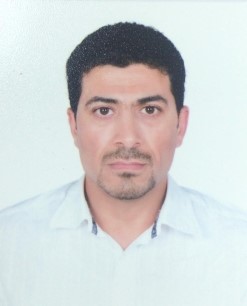

The outbreak of the current global pandemic caused by the spread of an evolved severe acute respiratory syndrome coronavirus-2 (SARS-CoV-2; COVID-19) possesses an unprecedented threat to the global health and world economy. Viral pathogenesis and dissemination require two major processes, attachment by S-protein followed by entry and viral replication. Viral invasion requires activation by cleavage of S-protein with host protease enzyme and viral replication requires RNA-dependent RNA polymerase (RdRp) and main protease (Mpro) enzymes. On the other hand, available antiviral drugs are limited by its single viral targeting and hence high probability to develop resistance, because of the high rate of evolved mutations in the virus. Here in this project, we propose to design drugs by coupling two major privileged scaffolds, one that can bind inhibit host protease and the other can bind inhibit critical viral enzyme, providing dual viral inhibition activity. The designed and developed compounds will provide superior anti-SARS-CoV2/COVID-19 activity when compared to currently available antiviral agents since they provide dual antiviral activities with excellent targeting. Furthermore, they will provide an excellent platform to overcome any possible drug resistance or evolved future viral outbreaks.
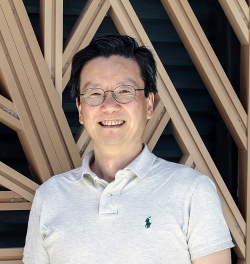

The current testing method is based on the reverse-transcription polymerase chain reaction (RT-PCR) which requires complex instrument and highly specialized personnel. Therefore, all samples are sent to a central lab after collection in the field and it can take up to a few days to get the testing results back during which the virus can further be spread out. In this project, we build a simple-to-use and inexpensive microfluidic device for rapid prescreening of SARS-CoV-2. In order to achieve this goal, we integrate an electrokinetic preconcentration technique for charged biomolecules with the CRISPR-Cas detection system and eliminating the need for isothermal amplification of the target nucleic acids. In this way, our SARS-CoV-2 prescreening system on chip is much simpler to build and operate, inexpensive and portable for a rapid deployment in the field.


The rapid identification of the presence of SRAS-CoV-2 in a patient’s samples is a prerequisite to efficiently counteract the current COVID-19 outbreaks. Currently, most diagnostic tests for COVID-19 rely on a technique called real-time reverse transcription-polymerase chain reaction (RT-PCR), which amplifies SARS-CoV-2 RNA from patient swabs. However, the method requires specialized labs and trained personnel. Moreover, although it may take around 3 hours to perform, most the time the results take much longer time, especially under large demand situations. A faster diagnostic test, with similar sensitivity or more, is highly needed to screen suspected patients or individuals at high risk.
In this project, we are intending to develop a paper-based microfluidic biosensor with multi-detection capability for the determination of SRAS-COV-2 in nasopharyngeal swabs, as well as saliva of individuals.
The proposed biosensor is an aptamer specific to the SARS-CoV-2. This aptamer-based biosensors will be tested using recombinant SARS-CoV-2 viral proteins as well as nasopharyngeal swabs collected from patients with COVID-19 or healthy controls. The sensitivity and specificity of this approach has been tested to be high for other viruses and it is expected to be highly sensitive in diagnosing patients infected with SARS-CoV-2. This approach is expected to be fast, reliable, easy to manufacture, and relatively cost-effective. Besides, it can be used for the quick mass screening of individuals at airports, malls, educational institutes, or other similar settings.

Color vision deficiency (CVD) or color blindness is an inherited genetic ocular disorder affecting millions of people around the globe. CVD is a common ocular disorder affecting, for example, an estimated 8% of males and 0.5% of women of Northern European descent. It limits distinguishing between specific colors depending on the CVD type and severity of the disorder. CVD patients may experience problems in work and everyday life when matching or discriminating between fine colors. While no cure for the CVD exists, several methods such as Enchroma glasses was developed to increase the color perception of those affected. We aim to develop economic-effective and commercially viable tinted contact lenses for color blind patients. Various types of contact lenses will be produced to fit each individual condition. Daily disposable, extended wearer, and reusable contact lenses will be fabricated to help the color blindness sufferers. In addition, commercial contact lenses which are currently available will be functionalized to aid in both conditions; vision correction and colorblindness. The lenses will be tinted by crosslinking them with Atto 488 and Atto 565 dyes. The mechanical, optical, toxicity, biological inertness, and biocompatibility of the fabricated contact lenses will be examined. Furthermore, the shelf life, and the eye tear influence on the lenses will be tested.